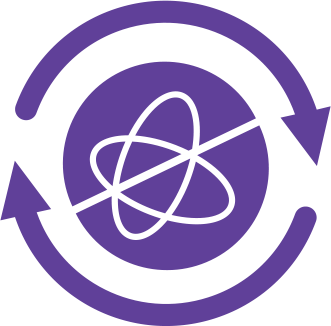

The Challenge
A changing world needs solutions for tomorrow
The UN call for Climate Action and the urgent need to develop Sustainable Cities and Communities reflects the huge challenges wastewater utilities are facing. A wetter and wilder climate will force wastewater treatment plants to increase capacity and establish storm water treatment. Increasing urbanisation will lead to insufficient treatment capacity and stress treatment efficiency. Ultimately this will challenge the ability to offer Clean Water and Sanitation to all.
To preserve Life below Water and Life on Land, utilities need to cease current use of unacceptable chemicals. Nutrient loads to water bodies must be reduced.
UN has acknowledged the huge Untapped Resources in wastewater. Apart from energy, hardly any resources are recovered. In EU 20% of the imported mined phosphorus could be replaced by recovered phosphorus from wastewater. It is an urgent need to leave the ‘treatment and disposal’ regime and enter the era of Reuse, Recycle and Resource Recovery.




The Solution
To overcome these challenges, we need to rethink how to design and build Waste Water Treatment Plants and transform them into Water Resource Recovery Facilities (WRRFs). Existing Wastewater Treatment Plants (WWTP) should be intensified to higher capacities and treatment standards. The Untapped Resources in wastewater must be recovered and utilized at the highest possible level.
Foreseeing upcoming challenges, the Norwegian utility Hias IKS started to rethink their current WWTP operation back in 2009. They quickly realised that their Activated Sludge plant from 1974 needed major upgrades, in particular the biological treatment step. An internal strategy process concluded that a future-proof treatment process should:
-
Increase Treatment Capacity with 50% using only 50% of the current volume
-
Remove Phosphorus without Al/Fe-based coagulants
-
Establish large-scale Recovery of Phosphorus
A designated R&D team led by Dr. Torgeir Saltnes was established to scout the market for potential technologies that could meet the targets above. As there was no suitable process available, the team enden up inventing a process combining the biology from EBPR (Enhanced Biological Phosphorous Removal) with ultracompact MBBR (Moving Bed Biofilm Reactor) technology, lately known as the Hias Process.
Successful piloting was performed from 2013-2015. Based on this pilot performance, a 10 000 PE Demonstration Plant was constructed and put in operation in 2016.
The Hias® Process has proven to be extremely compact and resilient, leaving room for both Storm Water Treatment and future expansions within the original footprint. Phosphorus removal is done without dosing coagulants, resulting in a 4-year average of effluent PO -P below 0,2 mg/l in the Demonstration Plant.
A Feasibility study for a Norwegian 100 000 PE retrofit project concluded that the Hias® Process will have a 30% reduction in Life Cycle Costs compared to the 2nd best alternative in the study.
Hias IKS is currently retrofitting their entire 195 000 PE plant to the Hias® Process to be commissioned fall 2021.
Back in 2015 Hias IKS decided to share the Hias® Process with the rest of the world. Thus, all Intellectual Property Rights and key resources have been transferred to the tech company Hias®, which is now offering the technology widely.
The Hias® process makes a significant contribution achieving the UN Sustainability Goals.




The Technology
The Hias® Process – probably the world’s most compact biological nutrient removal technology

The Hias® Process

At Hias Water Resource Recovery Facility the Hias® Process will handle 3,5 times higher BOD load using less than 50% of the volume, compared to an Activated Sludge process
- Morten Finborud, CEO, Hias IKS
The patented Hias® Process combines microbiology found in activated sludge systems with the high performance and ultralow footprint of MBBR-biofilm systems. The Hias Process removes organic matter, phosphorus via EBPR, and both nitrogen and phosphorus via simultaneous nitrification and denitrification P-removal (SND-P). Further intensification is achieved by the fact that biofilm sludge is easily separated with mechanical filtration, thus eliminating the need for huge sedimentation volumes.
The schematic view of the Hias® Process illustrates the lean realisation of the concept. Wastewater enters the reactor in the mechanically agitated anaerobic part, where it is mixed with biofilm carriers. Then wastewater and biofilm carriers flow by gravity through the anaerobic and aerobic zones in a plug-flow pattern. At the end of the reactor treated wastewater and sloughed off biofilm leaves the reactor, while the biofilm carriers are conveyed dry back to the start of the reactor. Treated wastewater and sludge is mechanically separated by filtration. Depending on treatment requirements, treated wastewater could either be released to the recipient or directed towards tertiary treatment.
Our Value Proposition
Efficiency
-
Meet the most stringent effluent requirements
-
Be the most cost-effective solution for phosphorus removal
-
Handle storm water events with biology intact
-
Produce sludge with excellent dewatering capacity
Compactness
-
Meet the most stringent effluent requirements
-
Be the most cost-effective solution for phosphorus removal
-
Handle storm water events with biology intact
-
Produce sludge with excellent dewatering capacity
Sustainability and Circularity
-
Meet the most stringent effluent requirements
-
Be the most cost-effective solution for phosphorus removal
-
Handle storm water events with biology intact
-
Produce sludge with excellent dewatering capacity
Click to see how efficient it works!

Performance
The Hias® Process is offered as a complete advanced biological nutrient removal solution. The MBBR technology makes it extremely compact. In addition, sludge separation is done with mechanical filtration, further intensifying the concept. No sedimentation volumes are needed. The process is 100% scalable.
In a single, continuously fed reactor and without using coagulants or external carbon sources, the Hias® Process will achieve




Phosphorus Recovery
As the Hias® Process removes phosphorus without using metal-based coagulants, the potential for phosphorus recovery is more than 95%. Up to 50% of the phosphorus can be recovered as the slow releasing fertilizer struvite. The remaining phosphorus in the sludge will have excellent plant availability.


